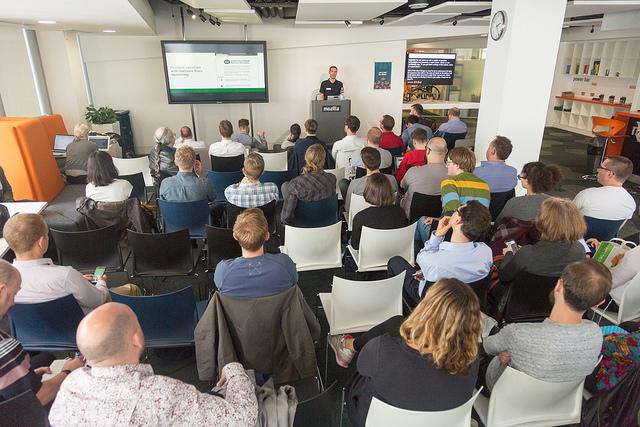Planning and Land Use
Urban and community planners use terms such as commercial, residential, industrial, institutional, and park to describe how people use land. Zoning is a means by which communities seek to regulate land use. Zoning ordinances have significant impacts on land use by limiting what developers and landowners can do with their properties, ideally advancing public health, safety, and welfare in the process. Other local government tools for influencing land use include subdivision regulations, development incentives, and building codes.
Planning is an activity that involves analysis of future community needs. It typically involves public engagement regarding community goals, alternatives for the future, and the development of a community vision that can be embodied in comprehensive or other plans. One major focus of planning is land use, but planning also includes issues such as public health, hazards, housing, transportation, and environmental protection.
As extreme weather events and impacts of climate change take a growing toll on some communities, many municipalities are giving more attention to the role that climate plays in defining their physical vulnerabilities. Through planning processes, communities recognize the interdependencies among physical and social vulnerabilities and question the extent to which climate change may influence land-use patterns. These questions often lead to discussions regarding the extent to which development and infrastructure can be designed and operated to promote resiliency and adaptive capacities.
Land use
Advocates for an increased emphasis on hazard mitigation in planning acknowledge that climate vulnerability and resilience are related to both how we build and where we build. Land-use policies and practices can have intended as well as unintended effects, and they require clear communications for communities to grasp the implications of specific development decisions.
For example, inattention to increases in the percentage of impervious surface—such as pavement in roads, sidewalks, driveways, and parking lots—in rapidly growing areas can increase exposure to flood hazards. In coastal areas, homes that can’t withstand the winds of tropical storms can become a source of flying projectiles that damage other structures. And wildfires can sweep through dense subdivisions, fueled by the combustible frame of one home to spread the fire to others.
It is critically important for planners, public officials, and the community at large to understand the mechanisms of destruction embodied in the multi-hazard risks that affect their area, and to take the appropriate land-use planning steps to minimize vulnerability and maximize resilience.
Planners also need to be cognizant of situations where preserving open space at a site may be a better alternative than allowing development. Having a community or land trust organization purchase land is one way to restrict development in some areas. Additionally, zoning might be used to control building density in ways that reduce vulnerability or maximize the utility of resilient infrastructure.
Other planning tools that can promote resilience include subdivision regulations that prescribe how homes are located in relation to flood or fire hazard zones. Additionally, new adaptation action zones are being used to address incremental risks, such as sea level rise and droughts.
Planning
Planning is a process by which a community documents current conditions and makes projections for the future to anticipate demographic changes and/or development and economic trends. The purpose is to establish a common vision for the community and develop goals, objectives, and strategies for achieving the vision.
With regard to planning in the face of climate change and natural hazards, the first question communities must answer is what types of threats they face. Secondary questions help the community determine what risks are acceptable and, for those that are not, what actions can be taken with available or projected resources to decrease those risks.
Communities can ensure progress toward these goals by integrating hazard mitigation and resilience concerns throughout their planning processes. Making these topics a central focus during community visioning and goal setting, highlighting resilience in comprehensive and other plans, and using implementation tools such as capital investments, development regulations, and development reviews effectively can help turn the vision into reality.
Looking forward
While communities have become accustomed to establishing priorities for addressing natural hazards based on historical data, they are now seeking credible data that can help them understand the potential range of future impacts on the built environment. This question is particularly important as most residential structures and infrastructure are intended to last a half-century or more, and are thus likely to experience increased frequency, intensity, and/or duration of extreme events, sea level rise, and other conditions outside their design specifications by the latter part of this century. Building only for today’s hazards and conditions is increasingly unacceptable. The challenge for federal science agencies, universities, and other institutions working in this field is to translate their data into information that is understandable and usable for developing local land-use policy in a timely manner. This section provides a variety of resources that can assist state, local, and community actors and stakeholders in pursuing community resilience planning.
References
- Godschalk, David R., and William R. Anderson, 2012: Sustaining Places: The Role of the Comprehensive Plan. APA Planning Advisory Service Report 567, 64 pp.
- Godschalk, David R., and David C. Rouse, 2015: Sustaining Places: Best Practices for Comprehensive Plans. APA Planning Advisory Service Report 578, 64 pp.
- National Institute of Standards and Technology, 2015: Community Resilience Planning Guide for Buildings and Infrastructure Systems, Volume 1. NIST Special Publication 1190, 114 pp.
- Schwab, James C., Ed., 2010: Hazard Mitigation: Integrating Best Practices into Planning. APA Planning Advisory Service Report 560, 156 pp.
- Schwab, James C., Ed., 2014: Planning for Post-Disaster Recovery: Next Generation. APA Planning Advisory Service Report 576, 204 pp.
- Schwab, James C., Ed., 2016: Subdivision Design and Flood Hazard Areas. APA Planning Advisory Service Report 584, 112 pp.


